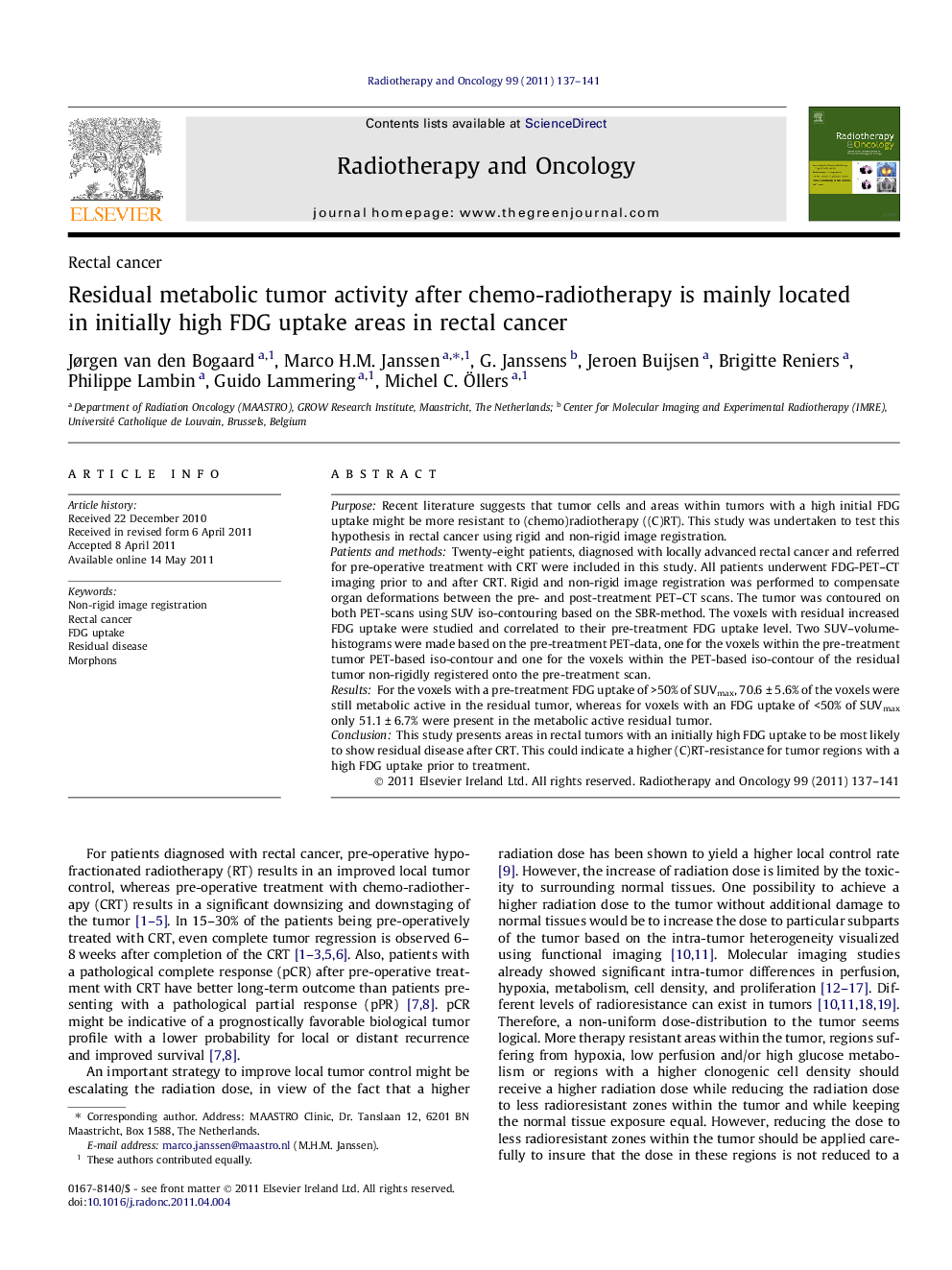| Article ID | Journal | Published Year | Pages | File Type |
|---|---|---|---|---|
| 2158562 | Radiotherapy and Oncology | 2011 | 5 Pages |
PurposeRecent literature suggests that tumor cells and areas within tumors with a high initial FDG uptake might be more resistant to (chemo)radiotherapy ((C)RT). This study was undertaken to test this hypothesis in rectal cancer using rigid and non-rigid image registration.Patients and methodsTwenty-eight patients, diagnosed with locally advanced rectal cancer and referred for pre-operative treatment with CRT were included in this study. All patients underwent FDG-PET–CT imaging prior to and after CRT. Rigid and non-rigid image registration was performed to compensate organ deformations between the pre- and post-treatment PET–CT scans. The tumor was contoured on both PET-scans using SUV iso-contouring based on the SBR-method. The voxels with residual increased FDG uptake were studied and correlated to their pre-treatment FDG uptake level. Two SUV–volume-histograms were made based on the pre-treatment PET-data, one for the voxels within the pre-treatment tumor PET-based iso-contour and one for the voxels within the PET-based iso-contour of the residual tumor non-rigidly registered onto the pre-treatment scan.ResultsFor the voxels with a pre-treatment FDG uptake of >50% of SUVmax, 70.6 ± 5.6% of the voxels were still metabolic active in the residual tumor, whereas for voxels with an FDG uptake of <50% of SUVmax only 51.1 ± 6.7% were present in the metabolic active residual tumor.ConclusionThis study presents areas in rectal tumors with an initially high FDG uptake to be most likely to show residual disease after CRT. This could indicate a higher (C)RT-resistance for tumor regions with a high FDG uptake prior to treatment.
